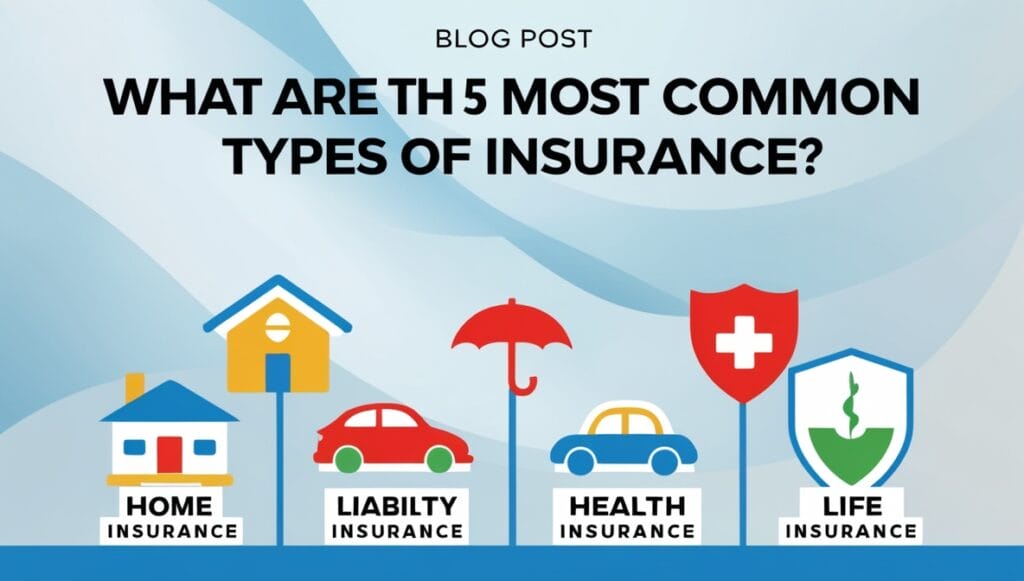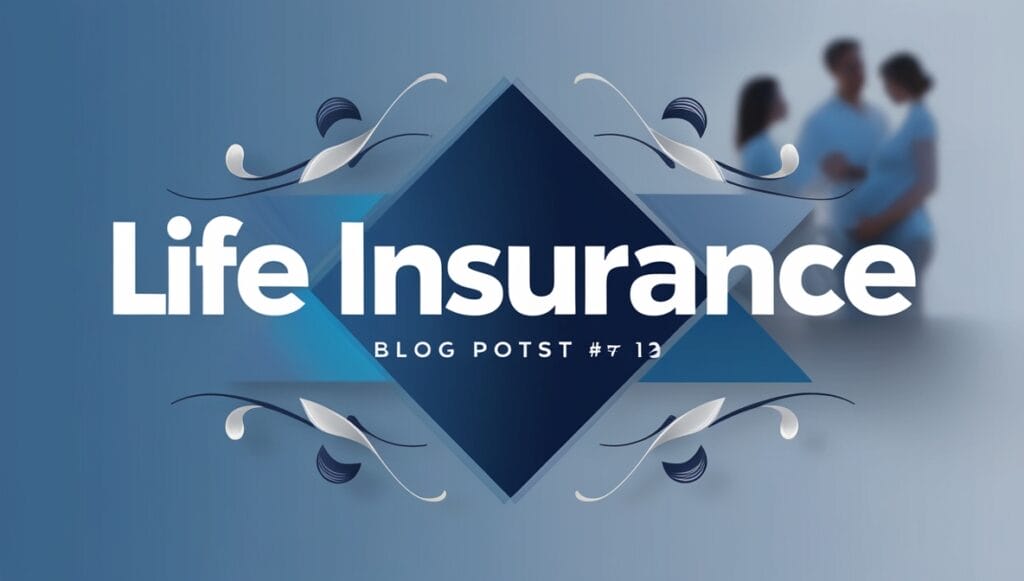What are the 5 most common types of insurance?
Description

What is Insurance? – A Detailed Explanation
Insurance is a financial arrangement in which individuals or entities pay premiums to an insurance company in exchange for protection against specific financial losses or risks. It is a risk management tool designed to provide financial security and peace of mind by transferring the financial burden of potential future losses to an insurer.
Key Components of Insurance
- Policyholder: The individual or entity who buys the insurance policy and is protected under its terms.
- Insurer: The company that provides the insurance coverage and pays out claims when certain conditions are met.
- Premium: The amount paid (usually monthly or annually) by the policyholder to the insurer to maintain coverage.
- Policy: A contract outlining the terms, coverage details, and conditions under which the insurer will pay the policyholder.
5-Claim: Think of this as when you officially ask your insurance company to pay you because something you’re insured against has happened (like a car accident or damage to your house).
- Coverage Limit: This is like the highest amount of money your insurance company will pay for any single covered incident. It’s the top end of what they’ll cover.
- Deductible: This is the specific amount of money you have to pay yourself first when you have a covered loss. Only after you’ve paid this amount does your insurance coverage start to pay the remaining costs.
Types of Insurance
- Life Insurance: Pays a sum of money to beneficiaries upon the policyholder’s death, providing financial support to dependents.
- Health Insurance: Covers medical expenses such as doctor visits, hospital stays, and prescriptions.
- Auto Insurance: Provides coverage for vehicle-related damages or injuries from accidents.
- Homeowners Insurance: Covers losses or damages to an individual’s home and possessions due to events like fire, theft, or natural disasters.
- Travel Insurance: Offers protection against travel-related risks, including trip cancellations, lost luggage, or medical emergencies.
- Business Insurance: Covers risks associated with running a business, such as liability, property damage, and employee-related claims.
Purpose and Benefits of Insurance
- Risk Transfer: Risk transfer means moving the financial burden of potential unexpected losses from one person or entity to an insurance company.
- Financial Protection: Helps individuals and businesses recover financially after losses.
- Peace of Mind: Reduces anxiety by ensuring help is available in times of crisis.
- Legal Requirement: Some insurance types, like auto or workers’ compensation, are legally required in many jurisdictions.
- Promotes Saving and Investment: Certain life insurance policies also act as long-term investment tools.
1. Health Insurance – A Detailed Overview

Health insurance is one of the most essential and widely used types of insurance, designed to cover the cost of medical care and protect individuals and families from the financial burden of healthcare expenses. As medical costs continue to rise, having health insurance is a critical component of personal and financial well-being.
What Health Insurance Covers
Health insurance typically provides coverage for a wide range of medical services, including:
- Doctor visits (both general and specialist consultations)
- Hospital stays and surgeries
- Emergency care and ambulance services
- Prescription medications
- Preventive services, such as vaccines and screenings
- Mental health services
- In some plans, coverage may also extend to dental and vision care, although these are often offered as separate policies.
Why It’s Important
Health insurance helps mitigate the high costs associated with medical care, especially for unexpected events like accidents, chronic illnesses, or major surgeries. Without coverage, these expenses can quickly become overwhelming, potentially leading to significant debt or the inability to access necessary care.
It also promotes early detection and preventive care, which can reduce the long-term cost and impact of health issues.
Common Plan Types
There are several types of health insurance plans, each with different rules regarding coverage, networks, and cost-sharing:
- Health Maintenance Organization (HMO) Plans
- Require members to choose a Primary Care Physician (PCP).
- Require referrals for specialist visits.
- Typically only cover care received within the plan’s network.
- Tend to have lower premiums and out-of-pocket costs.
- Preferred Provider Organization (PPO) Plans
- Offer more flexibility in choosing healthcare providers.
- Allow out-of-network visits, often at a higher cost.
- Do not require referrals to see specialists.
- Premiums and costs are generally higher than HMOs.
- High Deductible Health Plans (HDHPs)
- Feature lower premiums but higher deductibles.
- Often paired with Health Savings Accounts (HSAs), which let individuals save money tax-free for medical expenses.
- Ideal for those who want to save on premiums and are generally healthy.
How to Get Health Insurance
Health insurance can be obtained in several ways:
- Employer-sponsored plans: Many employers offer health coverage as part of employee benefits, often sharing premium costs with employees.
- Government programs: Such as Medicare (for seniors), Medicaid (for low-income individuals), and CHIP (for children).
- Health Insurance Marketplaces: Individuals and families can purchase plans through federal or state-run exchanges under the Affordable Care Act (ACA).
- Private insurance providers: Direct purchase of plans from insurance companies.
Tax-Advantaged Accounts
Many health insurance plans are complemented by tax-advantaged accounts to help manage out-of-pocket costs:
- Flexible Spending Accounts (FSA): Some employers provide a way for you to set aside money before taxes are taken out, and you can use this money to pay for certain healthcare costs.
- Health Savings Accounts (HSA): Used with HDHPs, enabling tax-free savings for qualified medical costs and offering rollover and investment benefits.
Conclusion
Health insurance plays a vital role in maintaining both physical health and financial stability. By covering a broad range of medical expenses and offering protection against unexpected costs, it ensures individuals can access the care they need without jeopardizing their finances. Choosing the right plan depends on personal health needs, financial situation, and preferred healthcare providers.
2-2. Auto Insurance – A Detailed Overview

Auto insurance is a type of financial protection designed to cover the costs associated with car accidents, theft, and other vehicle-related incidents. It is legally required in most U.S. states to ensure that drivers can compensate others for damages or injuries they may cause on the road.
Why Auto Insurance Is Important
Auto insurance not only protects your vehicle but also shields you from financial liability in case of an accident. Whether it’s a minor fender bender or a major collision, repair and medical costs can quickly become expensive. Auto insurance ensures that these costs are shared with the insurer, reducing the burden on you and helping others affected by your actions.
In most states, having at least liability insurance is mandatory to legally operate a vehicle on public roads.
Common Types of Auto Insurance Coverage
Auto insurance is made up of various coverage components, each designed to protect against specific types of risk:
- Liability Coverage
- Bodily Injury Liability: If you cause a car accident and someone else gets hurt, bodily injury liability coverage helps pay for their medical bills and other related expenses.
- Property Damage Liability: Covers damage you cause to someone else’s property (usually their vehicle).
- Legally required in nearly all states.
- Collision Coverage
- Pays for damage to your vehicle caused by collisions with another car or object, regardless of fault.
- Comprehensive Coverage: Covers your vehicle against non-accident related events such as theft, fire, and natural disasters.
- Medical Payments (MedPay) or Personal Injury Protection (PIP)
- Covers medical expenses for you and your passengers after an accident, regardless of who is at fault.
- Uninsured/Underinsured Motorist Coverage
- Protects you if you’re in an accident caused by a driver with no insurance or insufficient coverage.
How Premiums Are Determined
What you pay for auto insurance can change a lot because of various elements, like:
- Type and value of the vehicle
- Age, gender, and driving history of the insured
- Location Premiums are often higher in cities because of traffic and theft risks.
- Credit score (in some states)
- Level of coverage and deductibles chosen
- Annual mileage and purpose of vehicle use (e.g., personal vs. commercial)
Safe drivers, newer cars with safety features, and higher deductibles often lead to lower premiums.
Legal Requirements and Penalties
Driving without the required insurance can lead to fines, license suspension, and vehicle impoundment. In some states, proof of insurance must be carried in the vehicle at all times. Minimum coverage limits vary by state, so it’s important to understand your local laws.
Benefits of Auto Insurance
- Financial protection against high repair or replacement costs
- Liability coverage shields you from lawsuits and third-party claims
- Peace of mind Feeling secure knowing you’re protected if something unforeseen happens.
- Support services like roadside assistance and rental car reimbursement (optional in many policies)
Conclusion
Owning or driving a vehicle makes auto insurance a really important safeguard. It offers crucial financial security if you’re in an accident, your car gets stolen, or other unforeseen things happen. Understanding your policy options and state requirements can help you choose the right coverage for your needs, ensuring you’re both legally compliant and financially secure on the road.
3. Homeowners Insurance – A Detailed Overview

Homeowners insurance is a crucial financial safety net that protects homeowners from unexpected losses due to damage, theft, or liability. It provides comprehensive coverage for both the physical structure of a home and the personal belongings inside, as well as protection against legal claims resulting from accidents on the property.
What Homeowners Insurance Covers
- Property Damage
Homeowners insurance typically covers:- Structural damage from hazards like fire, lightning, windstorms, or hail.
- Detached structures, such as garages, sheds, or fences.
- Personal property, including furniture, electronics, and clothing, if stolen or damaged by covered perils.
- Vandalism and theft affecting the home or its contents.
- Liability Protection
If someone is injured on your property (e.g., slips on an icy walkway), liability coverage helps pay for medical expenses, legal defense, and potential settlements. - Loss of Use (Additional Living Expenses)
If your home becomes uninhabitable due to covered damage, this feature covers the cost of temporary housing, meals, and other living expenses. - Medical Payments to Others
Covers minor injuries to guests, regardless of fault, often up to a set limit (e.g., $1,000–$5,000).
Optional and Add-On Coverages
Standard homeowners insurance does not cover every risk. Policyholders can add or purchase separate coverage for:
- Flood Insurance: Required in high-risk zones; typically purchased through the National Flood Insurance Program (NFIP).
- Earthquake Insurance: Especially relevant in areas prone to seismic activity.
- Guaranteed or Extended Replacement Cost: Ensures your home can be rebuilt to original specifications, even if costs exceed the policy limit.
- Scheduled Personal Property: Extra coverage for high-value items like jewelry, art, or collectibles.
Mortgage Lenders and Insurance Requirements
If you have a mortgage, your lender will likely require homeowners insurance to protect their investment. The lender may also escrow the insurance premium, collecting it monthly with your mortgage payment and paying the insurer directly.
Premium Determinants
Several factors affect your homeowners insurance premium, including:
- Location (risk of natural disasters or crime)
- Home value and construction type
- Deductible level
- Claims history
- Protective features Security measures, like alarm systems or fire sprinklers
- Bundling home and auto policies with the same insurer can often lead to discounts.
Renter’s Insurance – A Related Option
While homeowners insurance is for property owners, renter’s insurance is designed for tenants. It provides:
- Coverage for personal belongings
- Liability protection
- Loss-of-use coverage if the rental unit becomes uninhabitable
protecting your belongings with renter’s insurance usually doesn’t break the bank. It’s often quite budget-friendly, with many policies costing less than $20 each month.
Conclusion
Homeowners insurance offers peace of mind and essential protection for one of your most valuable assets—your home. From fire and theft to liability and living expenses during repairs, it covers a broad range of risks. Whether you own or rent, having the right policy in place ensures financial stability in the face of unexpected events.
4-4. Life Insurance – A Detailed Overview

life insurance is basically a financial safety net. When someone who has a policy passes away, their chosen loved ones receive a sum of money, called the death benefit. It is primarily used to ensure that dependents, such as spouses, children, or aging parents, are financially protected in the event of an untimely death.
Purpose of Life Insurance
Life insurance plays a critical role in:
- Replacing lost income
- Paying off debts like mortgages or student loans
- Covering funeral and final expenses
- Funding children’s education
- Preserving family wealth or business continuity
It is especially vital for individuals with dependents, financial obligations, or long-term responsibilities.
Types of Life Insurance
- Term Life Insurance
- Coverage Duration: Provides protection for a fixed term—typically 10, 20, or 30 years.
- Affordability: Generally the most cost-effective option due to its simplicity and lack of a savings component.
- Fixed Premiums: Many plans offer level premiums and a guaranteed death benefit.
- Best For: Young families, individuals with temporary financial obligations, or those seeking high coverage at lower premiums.
- Permanent Life Insurance
- Offers lifetime coverage as long as premiums are paid.
- Includes a cash value component that grows tax-deferred and can be borrowed against or withdrawn under certain conditions.
- Types of permanent policies include:
- Whole Life Insurance: Fixed premiums, guaranteed cash value growth, and guaranteed death benefit.
- Universal Life Insurance: Flexible premiums and adjustable death benefits, with investment-linked cash value.
- Variable Life Insurance: Allows investment of cash value in market-based securities; risk and reward potential are higher.
Employer-Sponsored Life Insurance
Many employers offer group life insurance as a standard employee benefit:
- Typically term coverage with a modest death benefit (e.g., 1–2x annual salary)
- Employees can choose to buy extra insurance or include their family in their current plan.
Factors Influencing Premiums
Life insurance premiums are determined by:
- Age and gender
- Health and medical history
- Occupation and lifestyle risks (e.g., smoking, high-risk hobbies)
- Coverage amount and policy type
Applicants usually undergo a medical exam, although some simplified or guaranteed issue policies skip this step.
Benefits of Life Insurance
- Financial Security: Ensures your loved ones aren’t burdened by expenses after your passing.
- Estate Planning Tool: Used to transfer wealth tax-efficiently.
- Living Benefits: Certain permanent life insurance policies offer the option to tap into their cash value while you’re still alive, providing funds for unexpected needs or your retirement years.
Conclusion
Life insurance is a cornerstone of sound financial planning, especially for individuals with family responsibilities or significant debt. Whether opting for affordable term life coverage or investing in permanent policies with cash value, the right life insurance plan offers peace of mind and lasting protection for those who matter most.
5-5. Long-Term Care Insurance – A Detailed Overview

Long-term care insurance (LTCI) is a specialized type of insurance designed to cover expenses related to prolonged care services that are not typically included under regular health insurance or Medicare. These services are essential for individuals who are unable to perform everyday activities on their own due to chronic illness, disability, or cognitive impairment.
What Does Long-Term Care Insurance Cover?
Long-term care insurance usually helps pay for various types of assistance with daily living and personal needs, such as:
- Assisted living facilities
- In-home care and support services
- Adult daycare programs
- Hospice or respite care
Coverage focuses on helping with Activities of Daily Living (ADLs) such as bathing, dressing, eating, toileting, transferring, and continence.
Why Is It Important?
People often wonder whether Medicare or their health insurance policies will pay for long-term care services. The answer is largely no. Traditional health plans and Medicare only cover limited, short-term skilled nursing care—usually after a hospital stay. Long-term care insurance fills this crucial gap by offering financial support for ongoing, non-medical assistance, which can otherwise drain personal savings or assets.
LTCI is especially important for:
- Individuals without close family caregivers
- Those approaching or in retirement aiming to secure their post-work earnings.
- Those with a family history of chronic conditions or cognitive decline (like Alzheimer’s)
Cost and Affordability
- Premiums are generally more affordable when policies are purchased at a younger age, typically between 50 and 60.
- Rates may rise over time, especially if insurers adjust for increasing claims or care costs.
- Premium costs are determined by:
- Age and health status at the time of purchase
- Desired daily benefit and benefit period
- Elimination (waiting) period before benefits begin
- Inflation protection options
Employer and Hybrid Options
Unlike health or life insurance, long-term care insurance is not commonly offered by employers, though some large firms may provide access to group policies at discounted rates.
Hybrid policies are becoming more popular.
These plans merge life insurance or annuity contracts with long-term care coverage, providing:
Return of premium if benefits are unused
- Death benefit for beneficiaries
- Flexibility in accessing funds
These policies can be more cost-effective and appealing to those concerned about “using it or losing it.”
Key Benefits
- Preserves Retirement Savings: Helps avoid depleting assets on care.
- Provides Care Choices: Enables access to preferred care facilities or services.
- Reduces Burden on Family: Lessens the emotional and financial strain on loved ones.
Conclusion
Long-term care insurance is a forward-thinking tool that offers peace of mind and financial protection against the high and rising costs of extended care services. While it may not be necessary for everyone, those with a family history of chronic illness, limited caregiving support, or significant assets to protect should seriously consider it as part of their retirement and healthcare planning.
FAQS:
1. What are the main differences between PPO and HMO plans?
PPO plans offer more provider flexibility and no referrals, while HMO plans require primary care referrals and in-network providers.
2. How does long-term care insurance differ from other types of insurance?
Long-term care insurance covers extended personal care needs not typically included in health or Medicare coverage.
3. What are the benefits of purchasing life insurance through an employer?
Employer life insurance is often cheaper, requires no medical exam, and offers easy payroll deductions.
4. How does short-term disability insurance compare to long-term disability insurance?
Short-term disability covers temporary injuries or illness, while long-term disability supports extended or permanent conditions.
5. What are the typical costs associated with automobile insurance?
Auto insurance costs vary by driver profile, location, coverage level, and vehicle, averaging around $1,500 annually in the U.S.




